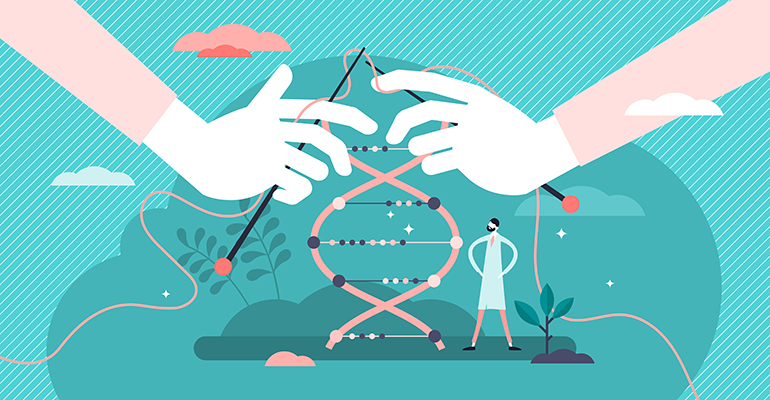News
How massive parallel sequencing amplifies ingredient transparency
11 May 2022Food manufacturers are using massive parallel sequencing techniques to build transparency and trust with consumers by confirming the authenticity of ingredients and the absence of harmful bacteria.
Massive parallel sequencing, or next-generation sequencing, is a term that describes techniques that perform parallel sequencing of millions or billions of individual short DNA sequences. “These techniques enable us to identify and further study adulteration of food, food authentication and food poisoning outbreaks,” says Dr Kimon Andreas Karatzas, associate professor in food microbiology and director of postgraduate research admissions, department of food and nutritional sciences at the University of Reading.

Food undergoes a series of tests to ascertain whether the claims and details on food packaging labels are accurate and reflect its contents. The industry uses massive parallel sequencing to authenticate ingredients listed, understand the ingredients’ sourcing and provenance and identify the presence of harmful bacteria.
By using these techniques, the food industry can determine whether a producer has been using the wrong type of meat or milk, for example, to produce a specific product, Dr Karatzas says. Producers may opt to formulate a product with the “much cheaper” cow milk to produce a cheese that consumers believe is made out of sheep or goat milk, which is more expensive to manufacture, Dr Karatzas says, detailing a common cause behind incorrectly labelled milk. “The technique could identify sequences of cow milk that should not be there,” he adds.
Massive parallel sequencing revealed scale of horse meat scandal
In Europe, the European Union sets out the necessity of food authenticity and ensures it is taken seriously with its Regulation No 1169/2011. The EU regulation establishes that consumers must be accurately and appropriately informed about the food they purchase and consume.
The massive parallel sequencing technique has proven fundamental in the past decade, as it was used to identify the presence of horse meat in the 2013 scandal that made national news in Ireland and the UK before expanding to Europe.
The news first came to light when The Food Safety Authority of Ireland tested a selection of supermarket beefburgers and ready meals in November 2012. The Authority specifically tested the sample to see whether they contained Deoxyribonucleic acid (DNA) from other undeclared species. Horse DNA was found in over a third of the beefburgers examined and pig was identified in 85%.
After the Irish Authority shared its findings with the UK’s Food Standards Agency, the UK asked the food industry to test all of its beef-based products for the presence of horse. Further rounds of tests showed that meat products purporting to be beef sold by Tesco, Aldi and Findus by French manufacturer Comigel contained up to 100% horse. With Comigel producing ‘beef’ meals for 16 countries, the news of the identification of horse in supposedly beef food items spread around Europe.
Tools for transparency: Revealing region, variety & provenance
Today, consumers expect full traceability and transparency in the food supply chain to maximise ethical behaviour. Manufacturers are now increasingly sharing information on sourcing, ingredients and transportation with consumers. Massive parallel sequencing enables food scientists to test and examine the full contents of products before they leave the manufacturing unit and are delivered in-store.
In addition to authenticating the ingredients stated on food packaging labels in the contents of the specific food product, massive parallel sequencing can be used to classify the variety of specific products the food has been produced from, such as the region or type of ingredient. For example, the technique can be used to determine whether a type of olive oil is made from a specific variety of olives, Dr Karatzas says.
Eradicating disease & food pathogens
Another major area is the investigation of food microbiota and the presence of pathogenic bacteria in food, Dr Karatzas continues. Pathogenic bacteria refers to a single-cell organism that causes disease.
In today’s food industry, massive parallel sequencing is being used to identify the different members of the food microbiota that can spoil or ferment food, Dr Karatzas says.
The technique is also used to perform whole-genome sequences of specific organisms, whereby the method analyses the source of foodborne outbreaks. The DNA sequence of a foodborne pathogen that causes disease or the death of a person could be compared to that of a similar pathogen present in food.
“An absolute match means that a specific food is the cause of the disease, death or of a whole outbreak,” Dr Karatzas adds.
